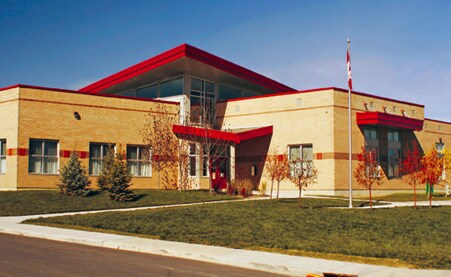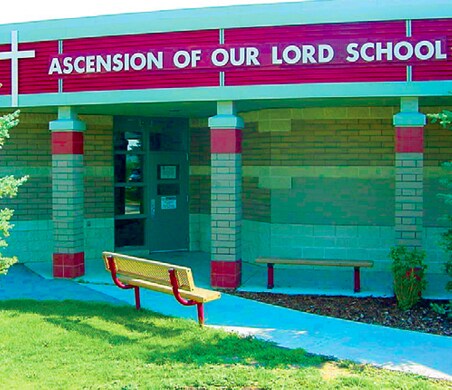Calgary Catholic School District supports literacy growth for all students with Leveled Literacy Intervention
By Wendy McMahon
Background
Calgary Catholic School District has a rapidly-growing student population, a large percentage of English Language Learners and a clear mandate to support literacy growth for all 58,000 of the district’s students.
Goals
In 2013, administrators launched a district-wide initiative to support growth in literacy and raise reading levels for all students.
Implementation
Since the district-wide implementation of the Leveled Literacy Intervention (LLI) System, student success stories are emerging throughout the district. Where specialized teachers aren’t available, teachers have developed methods to deliver LLI in the classroom in an effort to reach more struggling students. Many schools now have recorded reading levels for every student.
District Profile
Calgary Catholic School District (CCSD) is a large urban school district with 105 schools and over 58,000 students. To support students who find reading and writing difficult, the district has a team of Diverse Learning Teachers (DLT) who focus on helping struggling students develop and strengthen their literacy skills.

Student Profile
As a result of Calgary’s huge population growth in recent years, the district’s student population is growing quickly and includes many English Language Learners and Diverse Learners who need literacy support. In some CCSD schools more than half of the student population speak English as a second language.
Bryan Szumlas, Director, Instructional Services K-12, says provincial reading assessments also show discrepancies between boys’ literacy rates and girls’ literacy rates – with girls generally being stronger readers throughout all grades.
Implementation
In 2013, after reviewing student performance on provincial assessment tests and with the initial support of the now-defunct Alberta Initiative for School Improvement, district leaders launched a district-wide initiative to improve students’ literacy skills. This initiative included rolling out Fountas and Pinnell’s Leveled Literacy Intervention System for students in kindergarten through grade five (levels Green to Purple) throughout the district.
“We wanted to advance reading levels for not only the English Language Learners but also for all struggling readers in a classroom.”,” explains Szumlas. “The Leveled Literacy Intervention systems were a way of helping teachers have a resource to use with all students to help them move forward in their classes.”
“We also wanted to focus on strengthening the boys’ provincial assessment results and the best way to do that is to have them exposed to literacy that interests them and also has a context for boys.”
Anecdotal results show boys receiving LLI support are more interested in reading and improving their literacy skills. “We found that in the Leveled Literacy Intervention resources there were a lot of interesting topics for boys to explore,” explains Szumlas.
To support schools through the implementation, Szumlas asked the Diverse Learning Teachers team to lead the LLI implementation and act as champions within schools. “You need that champion in a school who believes in it and can also work with the staff on implementation,” he explains. “Just to buy it and to push it into a school from a district level – I’m not sure that would be as successful as having someone in the building leading and championing the program.”
Key Findings
Schools throughout the district report success stories of students improving their literacy skills. Schools also report positive changes to how they deliver and track student literacy support.
Our Lady of Fatima
Our Lady of Fatima is an elementary school in a low-income area with a student population of 600 students, more than half of these students speak English as a second language. Since introducing the Leveled Literacy Intervention System, Diverse Learning Coordinating Teacher Ross Travis reports students are making significant gains in their literacy levels.

“With each level, whether its division one (grades 1 to 3) or division two (grades 4 to 6) students, we’ve seen some pretty significant gains from most of the students. The first year we used LLI, we recorded their beginning reading level and then in May we recorded their end of year level. Some students in division one moved eight or ten levels through the intense intervention. That was pretty surprising for students to move that far in that amount of time,” explains Travis. “Students in division two moved three or four levels which is common, they’re not going to move as fast as the younger students.”
Teachers also used the Benchmark Assessment System (BAS) to assess reading levels for all students. “We have a reading level for every student at the school now,” says Travis. In September, teachers receive a class list that includes student reading levels, valuable information that teachers can use to ensure they work with students at their ability levels.
“Since everybody has their reading level we look at all the students and determine which students are the furthest behind or which students are struggling the most and those are the students that we target for support,” says Travis. “It’s an awesome program, it’s easy to use, it’s easy to adapt and change for different groups and it’s really accessible.”
Ascension of Our Lord
Leanne Timko, principal of Ascension of Our Lord, a K-9 school, says approximately 200 of her school’s 720 students are ELL students. “But we’re constantly increasing that ELL population. We get students in at different ELL levels throughout the course of the year from many different countries.”
Currently 25-30 students are receiving LLI support but, similar to Our Lady of Fatima, DLT teachers are working with classroom teachers to bring LLI support to more students.
Diverse Learning Teacher, Mary Sirianni, introduced nine grade seven students to LLI in October 2013. She refers to their LLI time as a book club and finds this approach works well with older students. Since October her students have moved anywhere from one to five reading levels – a significant change for older students.

“Students love it. They love coming. They are very enthusiastic about coming to the group. And they feel confident,” says Sirianni. “We’re working in a small group so they like that idea. They’re all engaged and I totally see the improvement and they see it too.”
Rose Koltes, a Diverse Learning Coordinating teacher who is heavily involved in rolling out LLI at the school, is currently working with a group of grade three students who are about two years behind their peers in their reading skills. Koltes feels the LLI system will provide these students with vital literacy skills. Already she’s noticed that students are improving their reading for understanding skills. “Often they would just read and make it up but I find that because they really enjoy the LLI books, they want to know what is going on. So their reading for understanding is really improving.”
With so many students at at Ascension of Our Lord needing reading support, Timko sees great value in assessing every student’s reading level.
All Ascension of Our Lord students from grades one to six have been tested using the Benchmark Assessment System and staff is working to assess students in grades seven through nine. All new students at the school also have their literacy levels assessed as soon as they arrive.
“As a district, the idea of having the same leveled literacy intervention program and resources from school to school is incredibly valuable,” says Timko. “Having continuity of literacy resources within the district helps when students move schools. When a new student comes to us we are able see which level they are at and then put them into an appropriate level at our school.”
Moving Forward
With much success to show for their commitment to literacy growth, administrators and staff at Calgary Catholic School District continue to find new ways to reach students who need literacy support. The district currently has the Primary and Intermediate Leveled Literacy Intervention systems and in September 2015 began rolling out the new Middle/High School systems, with high hopes they can help older students grow their literacy skills.
Tania Longinotti, a Language Arts Consultant for CCSD says the district is always working on new ways to reach as many struggling students as possible. Recently, the DLT team introduced the LLI program to all teachers and made the books available for use in classrooms. With the DLT team on hand to provide training and guidance, teachers throughout the district are working to implement a Daily 5 framework and centres in their classrooms, giving them time to deliver LLI lessons in the classroom.
“With each level, whether its division one (grades 1 to 3) or division two (grades 4 to 6) students, we’ve seen some pretty significant gains from most of our students.”
“As a district, the idea of having the same leveled literacy intervention program and resources from school to school is incredibly valuable.”
“We wanted to advance reading levels for not only the English Language Learners but also for all struggling readers in a classroom.”
Ross Travis, Diverse Learning Coordinating Teacher Our Lady of Fatima

